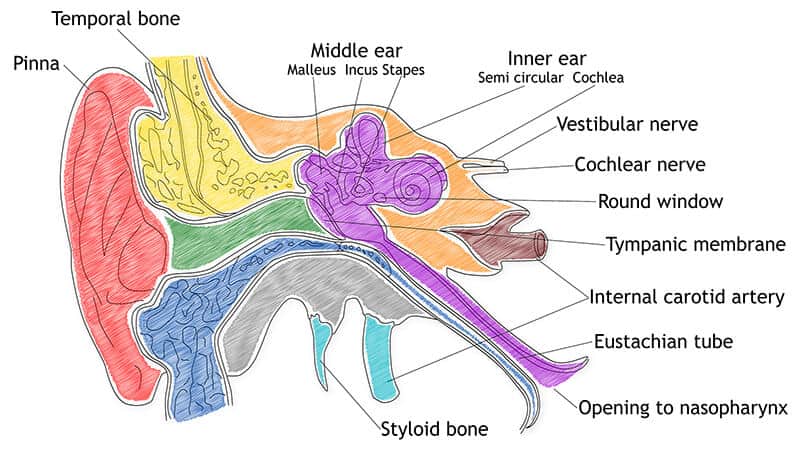Hearing Loss: Types and Causes
According to the Hearing Loss Association of America, approximately 48 million Americans report some form of hearing loss.
The statistics increase to one in three for people over the age of 65. There are three types of hearing loss: conductive, sensorineural, and mixed (when the first two causes are combined). Each type is treated depending on their causes, which vary due to lifestyle, age, and genetic makeup.
Conductive Hearing Loss
Conductive hearing loss relates primarily to variances in the structure of our outer and middle ear. When there is a congenital malformation of the ear structure (canal, outer ear, middle ear, Eustachian tube function), or impacted earwax buildup, perforation of the eardrum, residual effects of allergies, ear infection or a benign tumor, conductive loss may occur.
Otosclerosis, which affects the movement of small bones in the middle ear, is another cause of conductive hearing loss and can often be treated surgically. Fluid build-up caused by infection in the middle ear may be treated with antibiotics, or in some cases, surgery.
Head trauma that injures structures within the outer and middle ear may also cause conductive hearing loss. Individuals experiencing conductive hearing loss can be treated surgically or medicinally, as well as being fitted for a hearing aid.



Sensorineural Hearing Loss
Sensorineural hearing loss relates to the inner ear and shares some of the same causes as conductive hearing loss, such as otosclerosis and head trauma. The majority of sensorineural hearing loss issues in adults are due to inner ear problems.
Common causes of hearing damage and loss include exposure to loud noises over an extended period of time (this includes everyday activities, such as using a hair dryer or lawn mower, or riding a motorcycle), as well as genetic inheritance and aging. In most cases, sensorineural hearing loss is caused by the irreversible damage to the mechanisms of the inner ear, such as hair cells and nerve cells.
In cases where individuals experience tinnitus or vertigo, as well as fluctuating hearing loss, the cause may be Meniere’s Disease. With sensorineural hearing loss, the surgical treatment of a cochlear implant or being fitted for a hearing aid will typically greatly improve hearing.
Mixed Hearing Loss
Mixed hearing loss is the combination of conductive and sensorineural hearing loss. In other words, at least two parts of the ear structure are affected. Generally speaking, audiologists recommend first the treatment of the conductive elements, followed by treatment of the sensorineural elements. Mixed hearing loss is usually identified after several examinations in which the various combinations of causal factors are determined. In this case, mixed hearing loss can be treated by surgery, medication, or the use of a hearing aid, depending on specific causes identified by an audiologist.
Though hearing loss widely affects a large number of Americans, the causes and experience differs on individual basis. If you believe you are experiencing changes in your hearing or a degree of hearing loss, it is crucial to visit an audiologist for an audiogram (hearing test). This is the first step to determining the type and causes of your hearing problem – and the first step to finding the suitable treatment.
